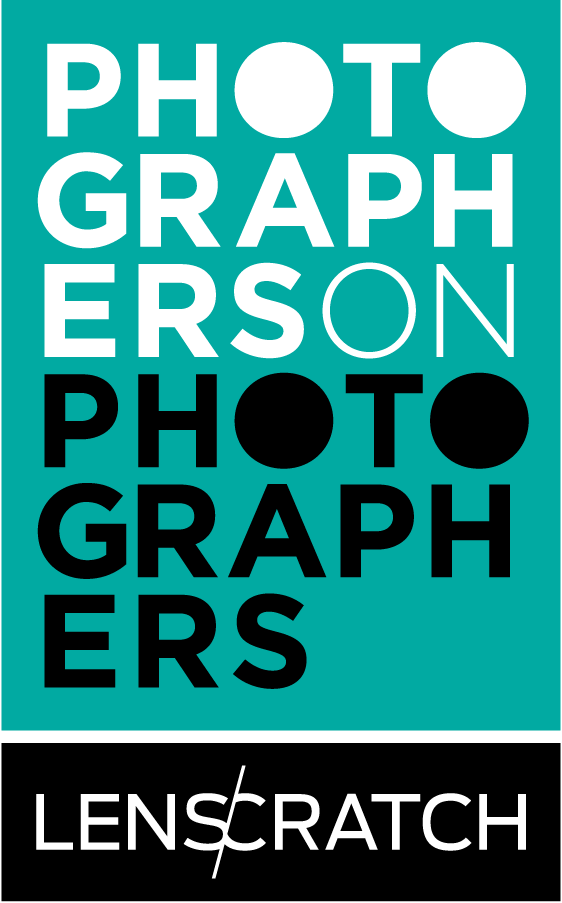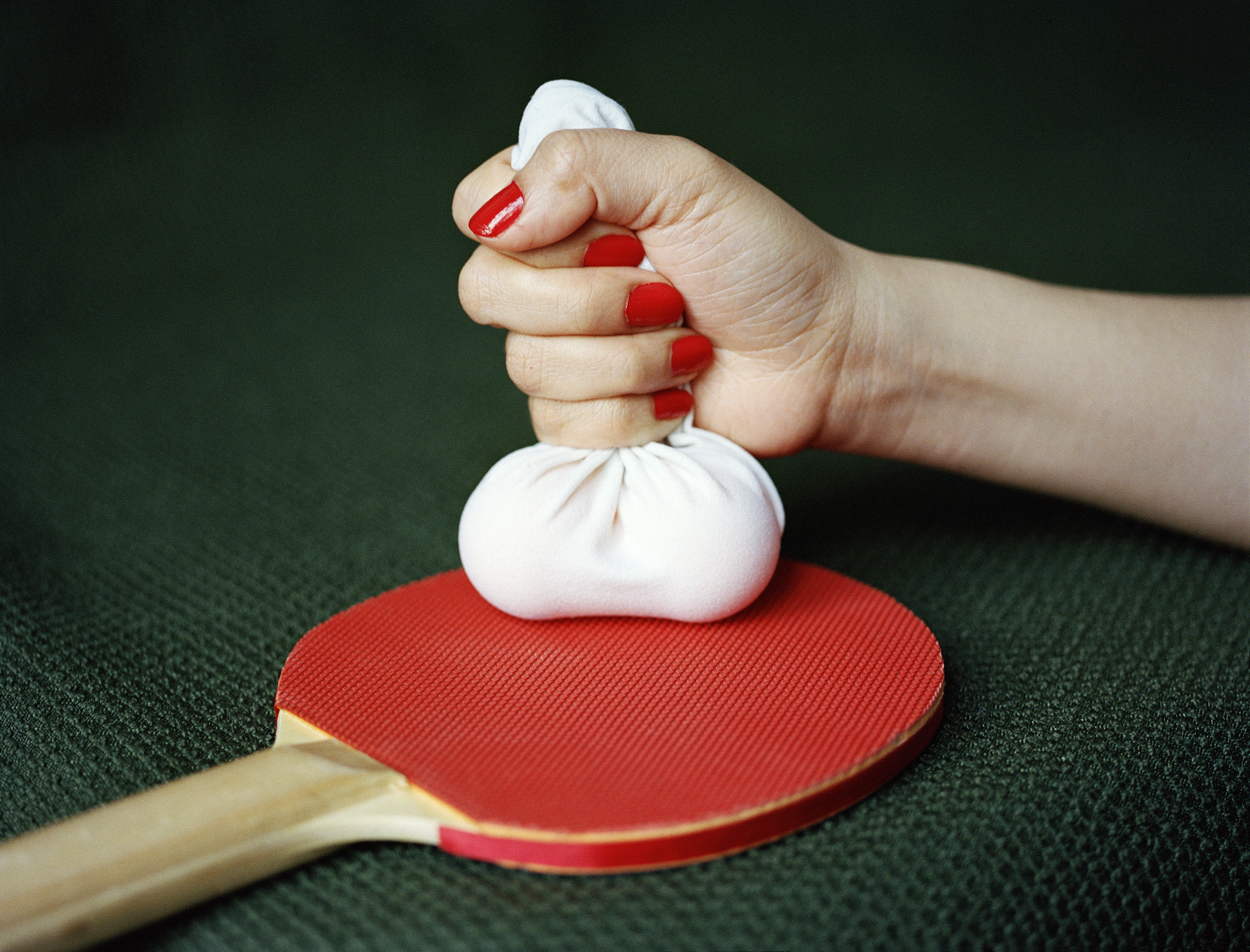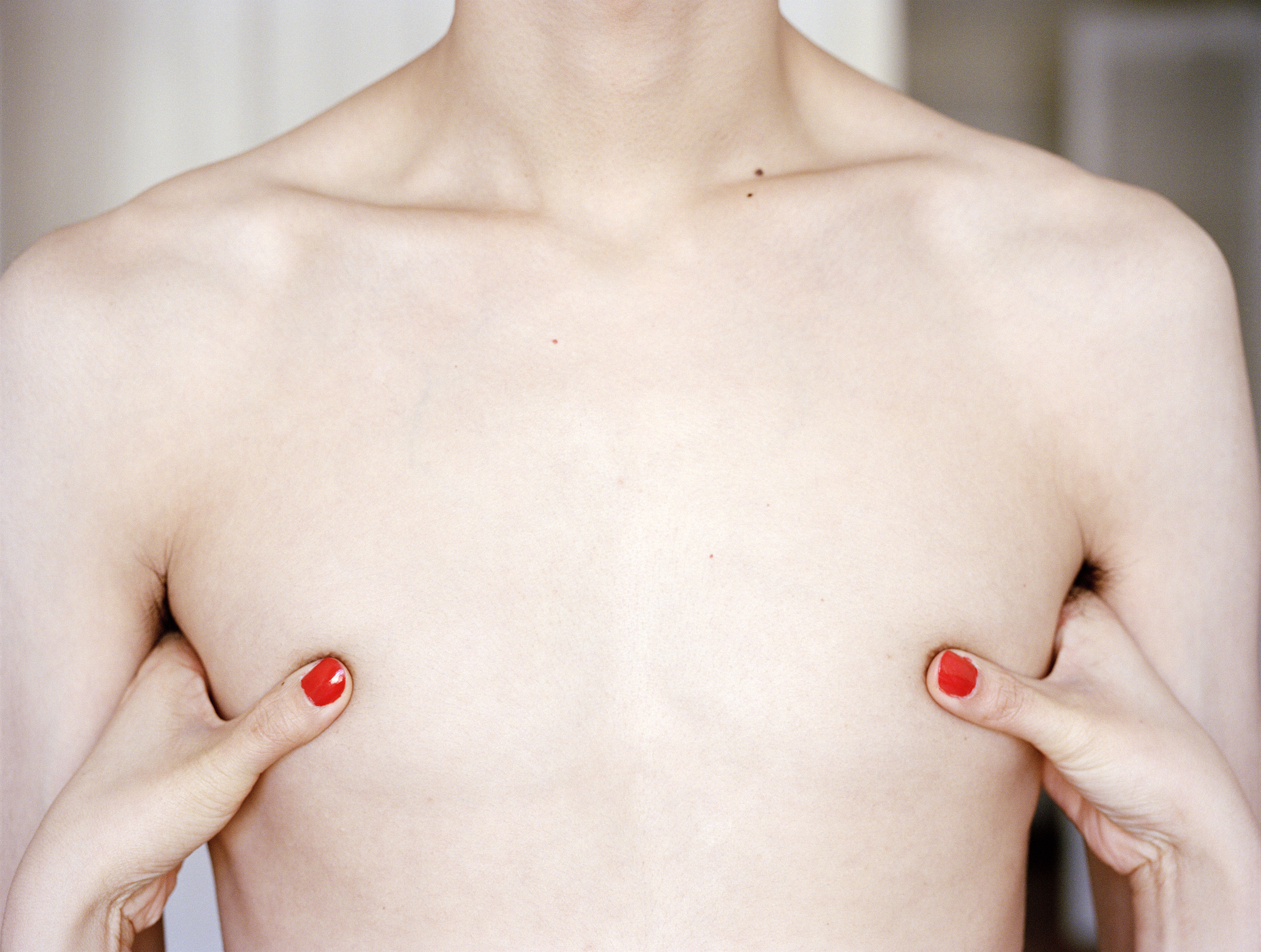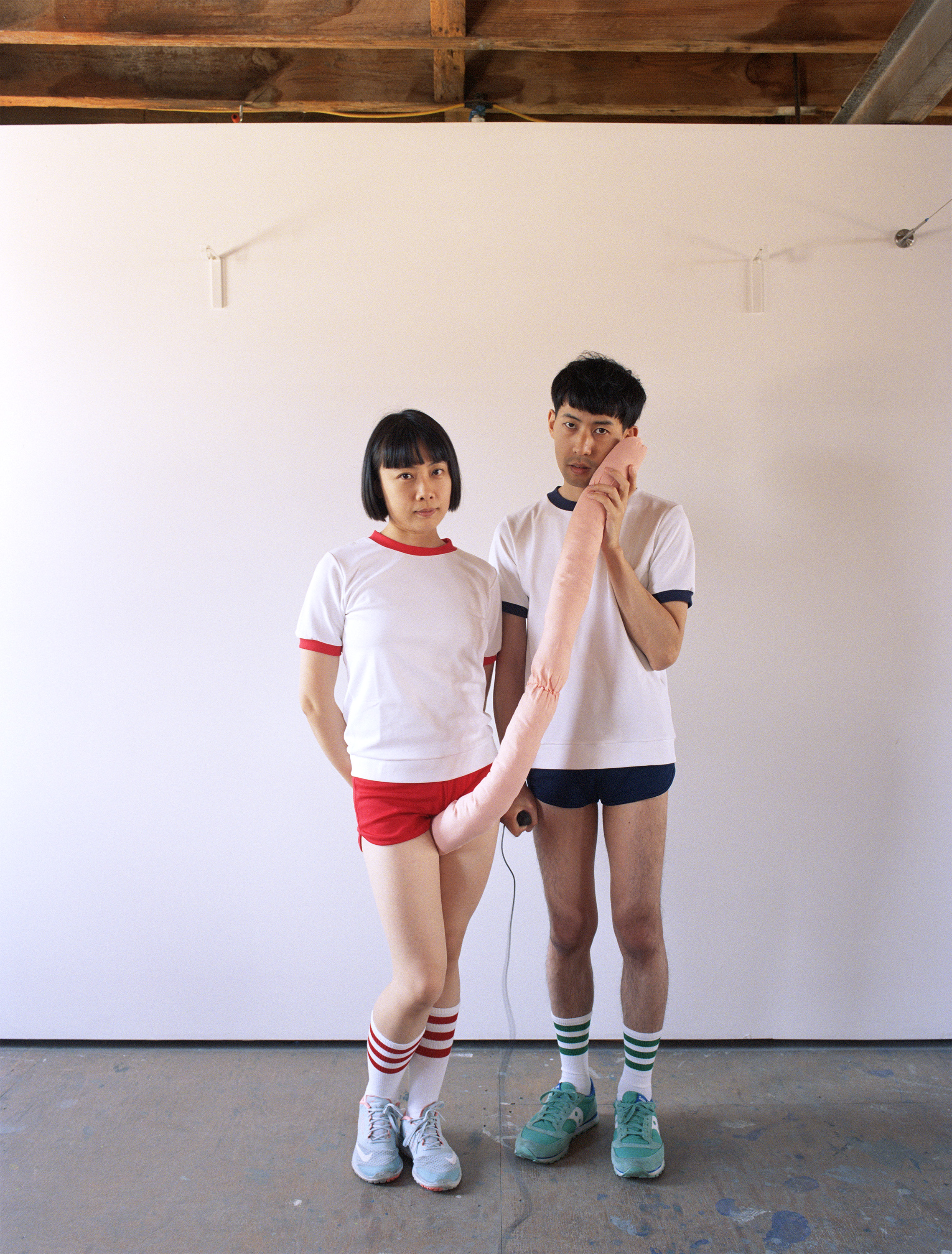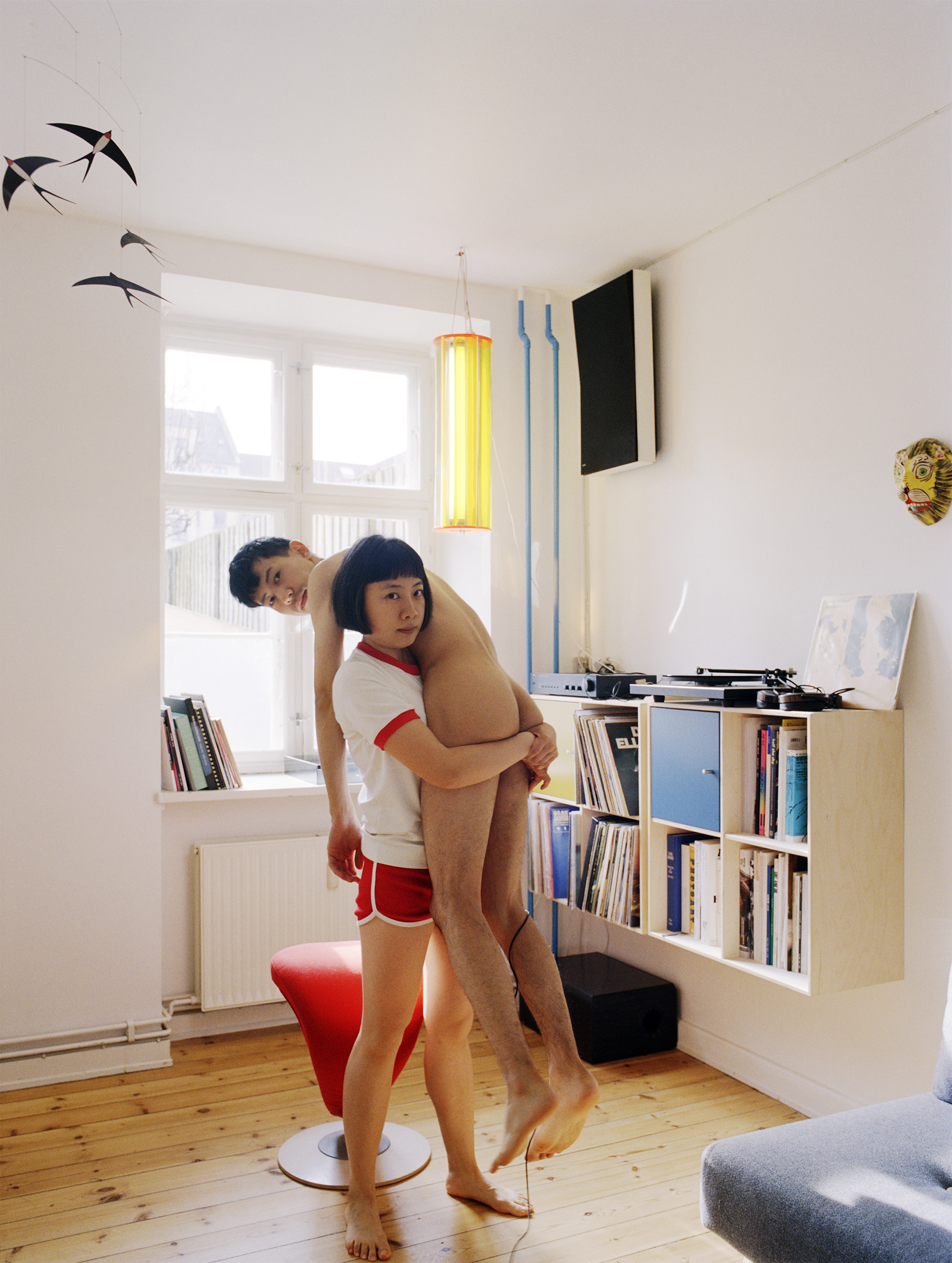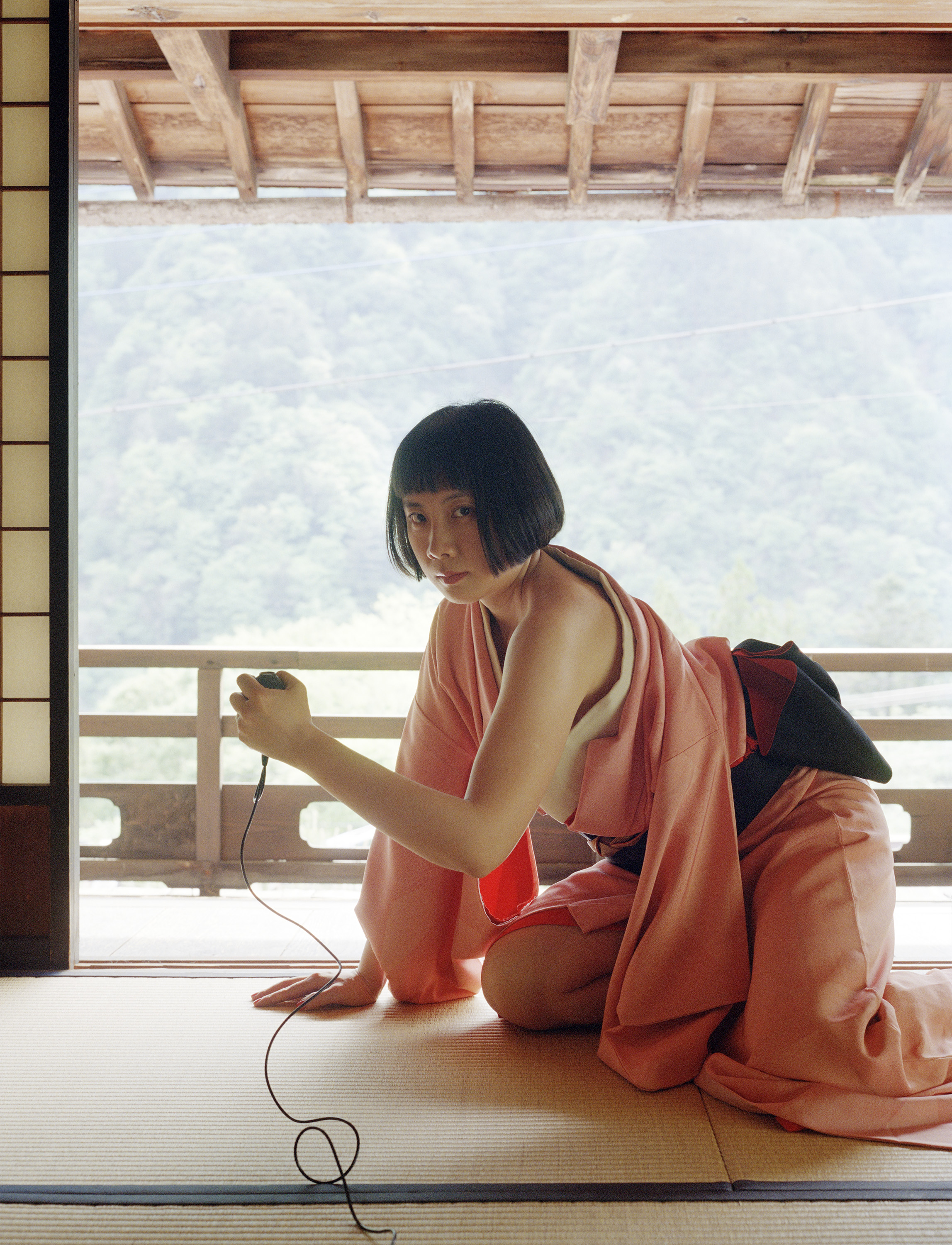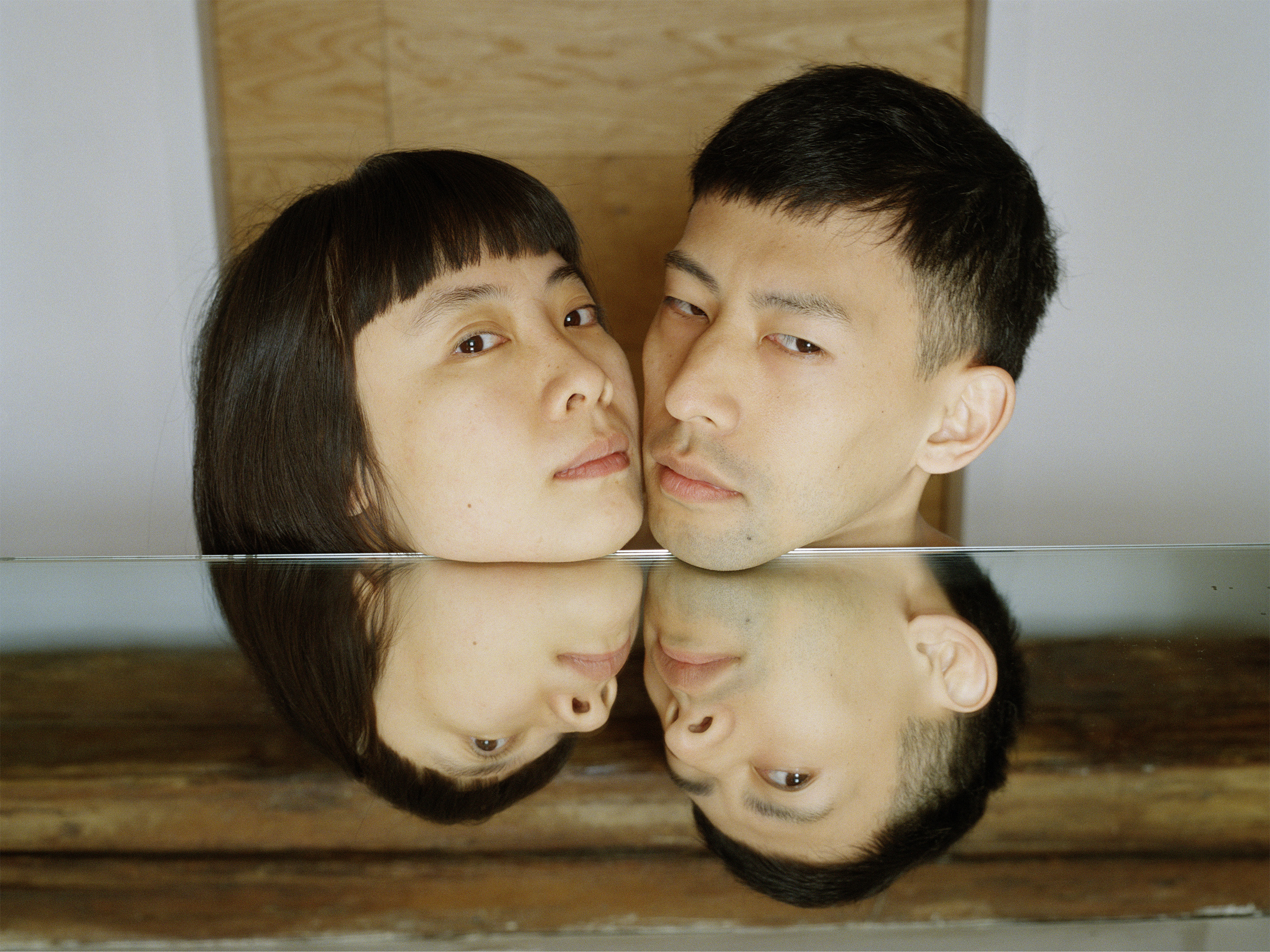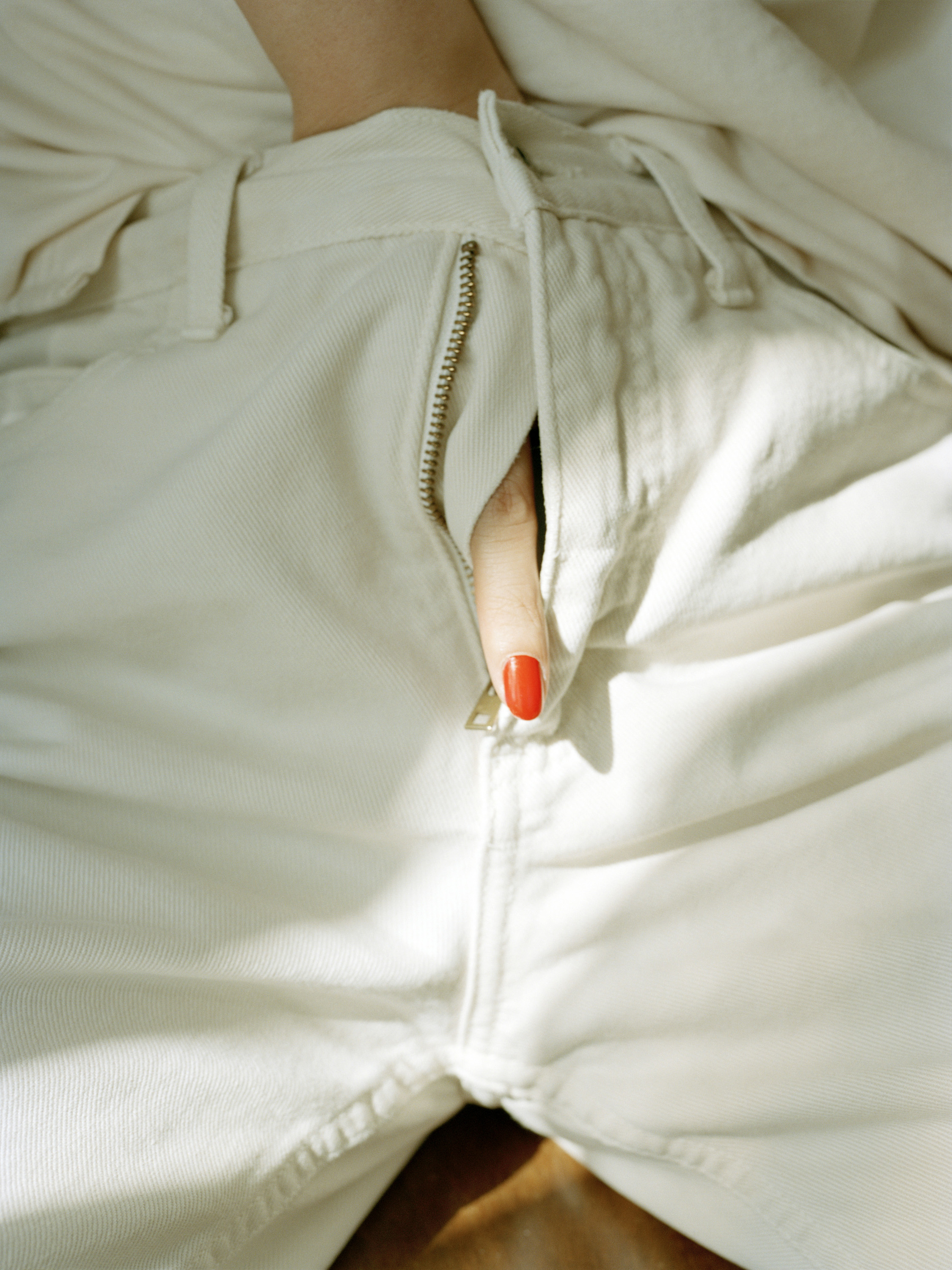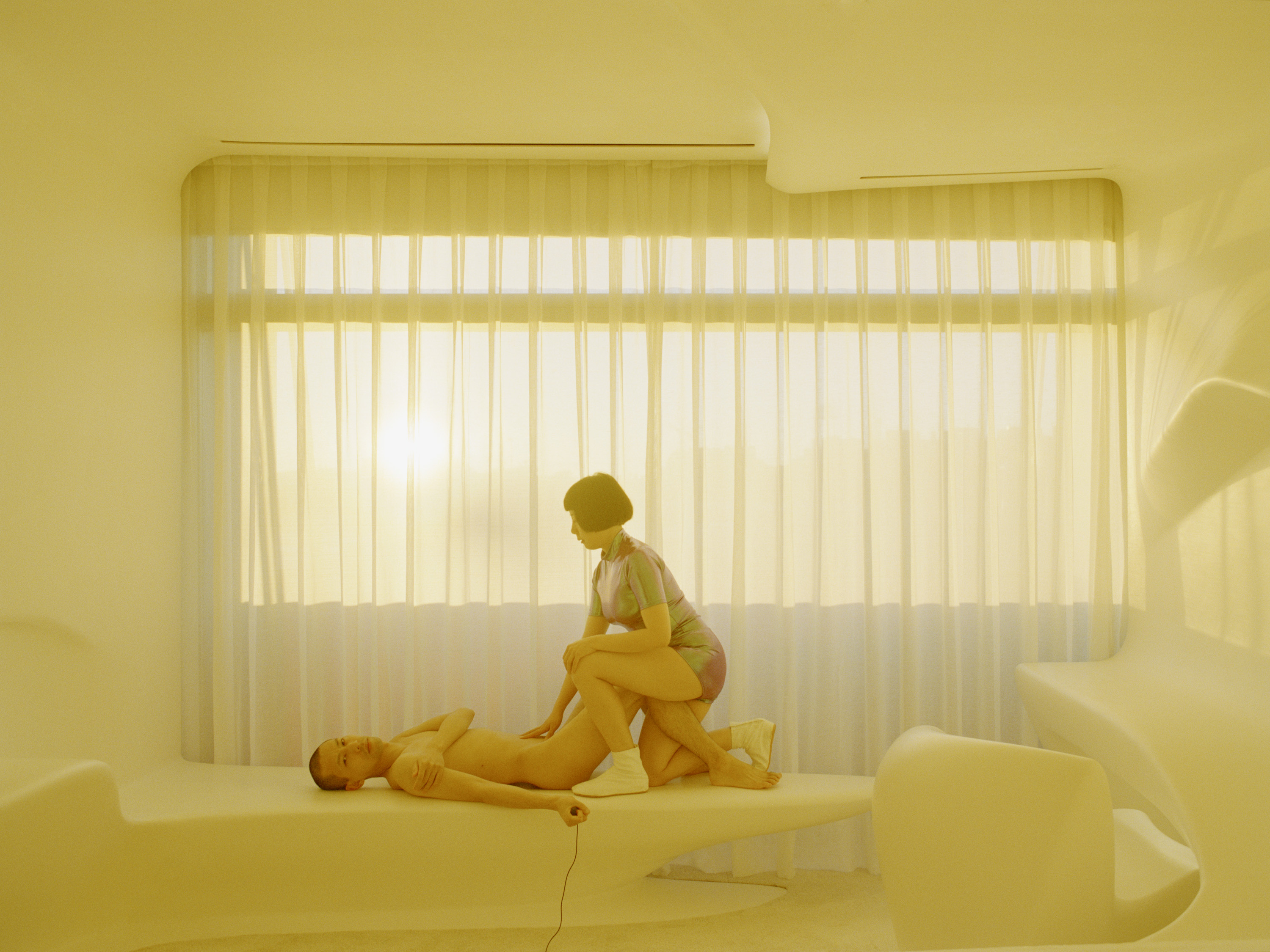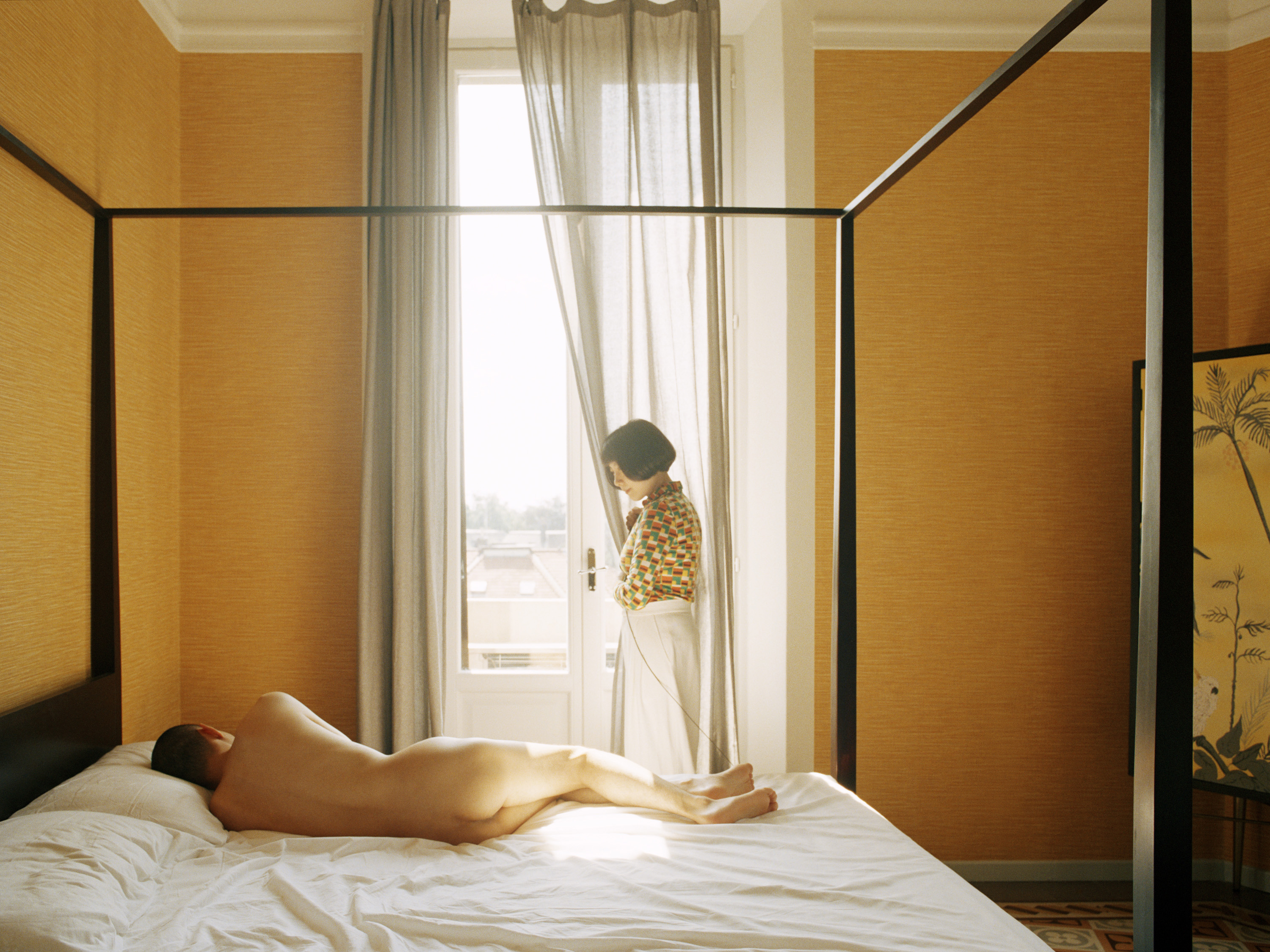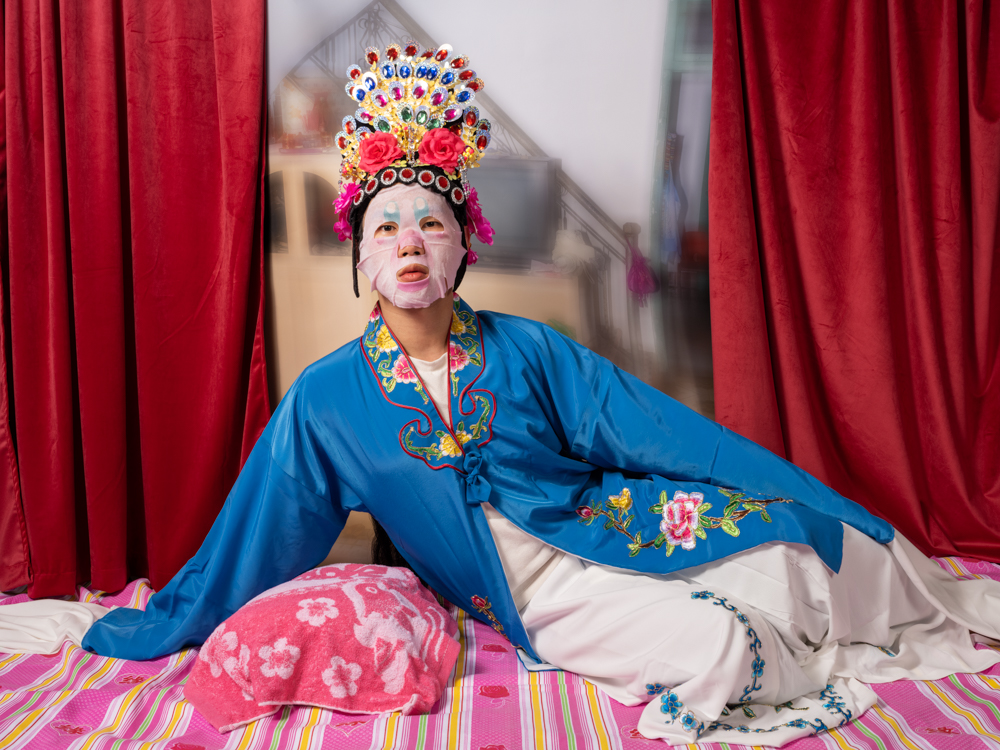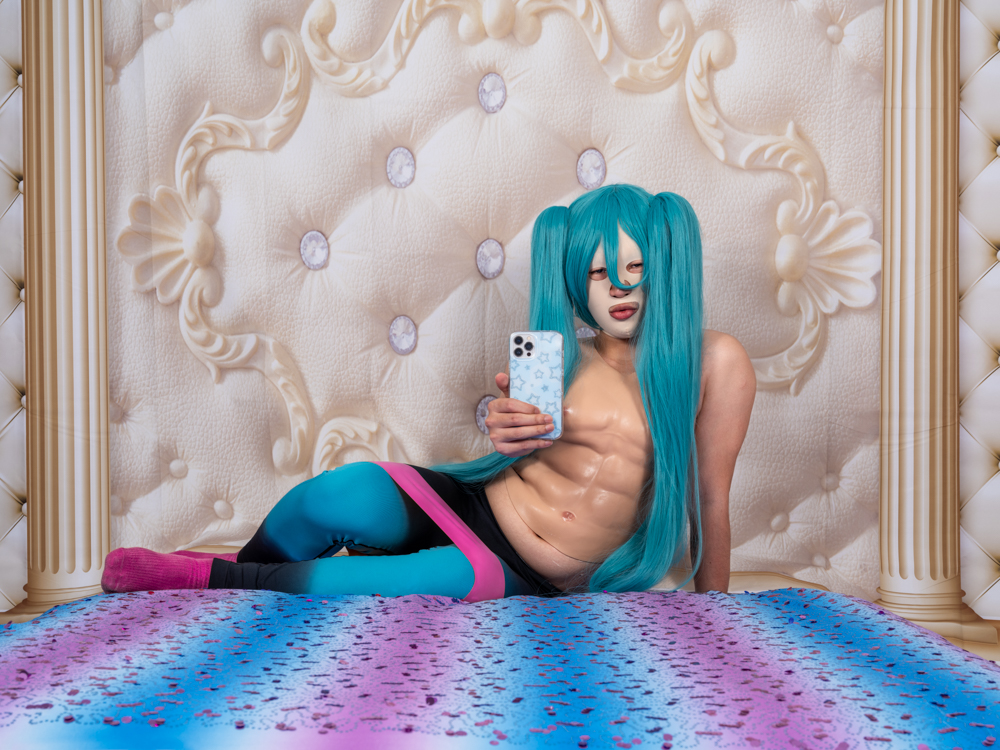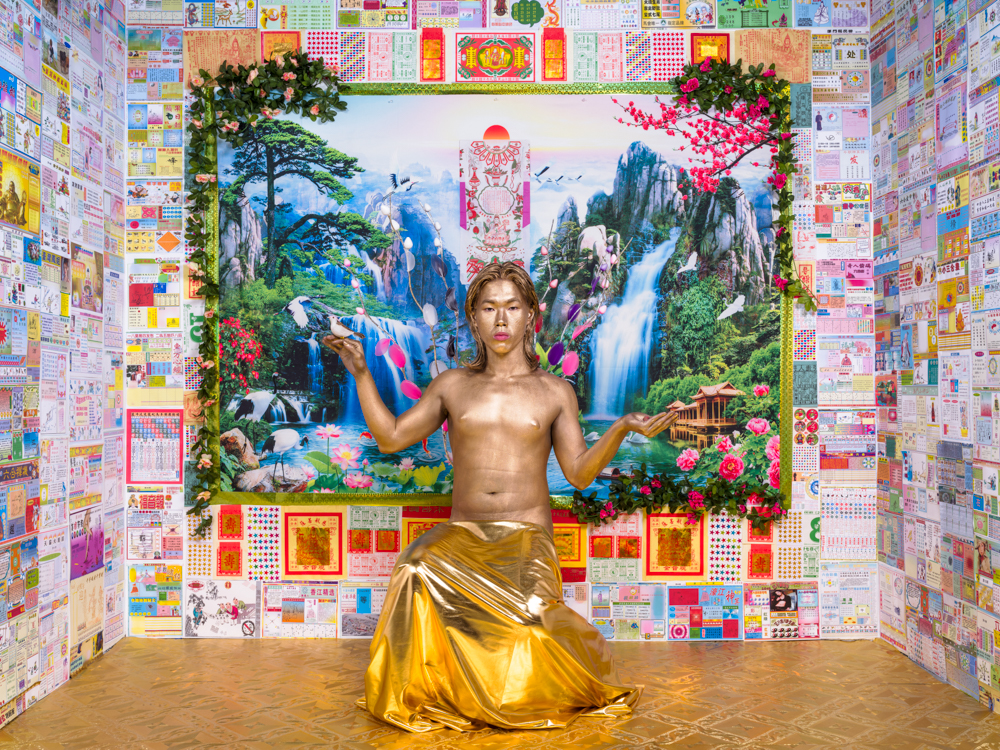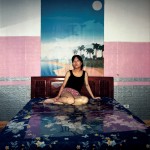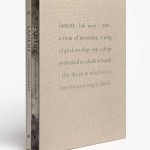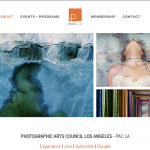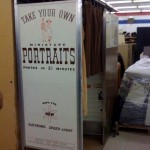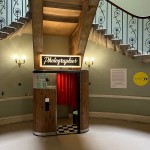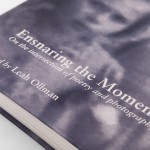Photographers on Photographers: Yukai Chen in Conversation with Pixy Liao
The first time I encountered Pixy Liao‘s work was during my first job at a coffee shop, where the owner, also a photographer, displayed photobooks and zines on a bookshelf. Pixy’s “Experimental Relationship” was among them. This photobook stood out to me as it was the first project I had seen that delved into intimate relationships and the power dynamics within them. The playfulness and multiple layers in some images drew me back again and again. I feel a connection to Pixy because we were both born in China, came to the United States to pursue an MFA, and ended up using self-portraiture as a method for creating images. These shared experiences provide us with many topics to explore together.
Pixy Liao, originally from Shanghai, China, is an artist based in Brooklyn, NY.
She has exhibited her work internationally, including at Fotografiska, Rencontres d’Arles, Asia Society, and the National Gallery of Australia. Liao is a recipient of several awards, such as the NYFA Fellowship in Photography, Santo Foundation Individual Artist Awards, and the Madame Figaro Women Photographers Award, etc,. She has completed artist residencies at institutions like Light Work, Lower Manhattan Cultural Council, Center for Photography at Woodstock, University of the Arts London, School of Visual Arts, Pioneer Works, and the Camera Club of New York.
Liao holds an MFA in Photography from the University of Memphis.
Follow Pixy on Instagram: @bloodypixy
Yukai Chen: I noticed that many of your past interviews are project-oriented, but Lenscratch’s series is called “Photographers on Photographers.” As a photography artist myself, I might be more inclined to ask about your creative process, though I will also touch on some of your projects.
Pixy Liao: Sure, that sounds good.
YC: I’ve been following your work for a long time and it has given me a lot of inspiration. But the first question I want to start with is how have you been lately? Any new work?
PL: Just taking it day by day, nothing special. As for creating, I’ve always been creating, but my approach is more spontaneous, not very planned. I don’t usually set out to do a big project step by step. It’s more like if an idea arises during a certain period and I have the time to do it, I’ll make it happen. If not, I just live my life normally.
YC: I’ve been following your recent works, which include videos and installations, like the temple for Wu Zetian. Can these be considered an extension of your exploration in Experimental Relationship?
PL: You could say that. Experimental Relationship was more about self-exploration and understanding myself. Later, I realized that my work had to come from my own perspective and life experiences. My projects often reflect my thoughts as a woman in society. After Experimental Relationship, my work continued to focus on female identity.
Previously, my work relied heavily on my partner, Moro. But he often told me to do more independent work and not depend on him. I agreed and felt the need to create something solely on my own. So, those projects are not about relationships but are centered around the female perspective.
YC: In previous interviews, you mentioned that your undergraduate major was in design.
PL: My undergraduate major was actually in communication.
YC: Such a coincidence. I majored in advertising when I was an undergrad.
PL: That’s closer. My major was educational technology, which is a branch of communication. I didn’t even fully understand it myself. And I later self-taught design.
YC: Like you, I only studied fine art photography in graduate school.
PL: Yes, I had to take many foundational art courses.
YC: Do you remember why this medium attracted you back then?
PL: After graduating, I lost interest in my major and taught myself design. But in my design job, I found that my goal was to serve clients, which meant I had no control over my work.
YC: Like a client-agency relationship.
PL: Exactly. I wanted a mode of creation where I could have control over my final work.
YC: Do you remember why this medium attracted you back then?
PL: After graduating, I lost interest in my major and taught myself design. But in my design job, I found that my goal was to serve clients, which meant I had no control over my work.
YC: Like a client-agency relationship.
PL: Exactly. I wanted a mode of creation where I could have control over my final work.
YC: Did you consider other mediums at that time?
PL: Not really. I was interested in design but thought photography was a good, spontaneous decision. Did you have to take many foundational courses to switch to photography?
YC: My undergraduate university had courses in art history and design history. And my school, being an advertising college, had visual communication design courses.
PL: My school was actually a foreign language school, and other courses were added in.
YC: Did you have any moments in your photography practice where you felt a sudden realization, like “photography fell on me”?
PL: Did you have such moments?
YC: I often feel like I’m creating something two-dimensional. In grad school, our critiques were divided into 2D and 3D, which sometimes felt isolating. In contemporary art, there seems to be a wall between photography and other forms of art as well.
PL: You realized this earlier than I did. After graduation, I only later regretted not studying other studio art mediums. At first, I was a bit lost and unsure of what kind of photographer I wanted to be. Initially, I just wanted to be a commercial photographer to make money. But I realized that photography was different from what I imagined. It’s not just about taking a good photo but about what you’re expressing through your projects.
YC: I was inspired by the humor and playfulness in your work. How did you turn to self-portraits? When I first came to the U.S., my projects were more documentary-style, but I felt disconnected from the land. I turned inward and started staging photography.
PL: I felt similar. I could take a good photo, but it could be any photographer’s work. I always wondered about the significance of my photos. Even with self-portraits, I wasn’t sure who I should be in the photos. At first, I took photos of my back in spaces I liked because I hadn’t figured out my identity in the images. Meeting Moro changed that. He supported my photography, and we were compatible. I found my identity in the photos and realized that taking photos was something I genuinely wanted to do, not just to take a good photo.
YC: Your previous interviews mentioned how much you like the image of the femme fatale and villain characters. Recently, there’s been more discussion about such characters in art and film, like last year’s Palme d’Or winner Anatomy of a Fall, in Chinese social media. Do you think there’s been an increase in unconventional female characters in art and film?
PL: Not really. Are you referring to foreign films? In the 1990s, Japanese TV had a series called 悪女/Waru, which depicted a self-centered woman. There were also 1970s Japanese films called Pinky Violence that were entertaining and featured female protagonists in gangster roles. These early works combined the femme fatale image with entertainment, making it more acceptable because they were fun.
YC: They have a campy feel.
PL: A little bit. Although these films featured female leads, they were often aimed at male audiences with gratuitous and unnecessary nudity and exposure.
YC: It seems like much of Japan’s adult entertainment is male-oriented.
PL: I don’t mind it, though. I find it very inspiring when it comes to work like these.
YC: In the Chinese context, I feel there’s been more discussion about the femme fatale character in recent years.
PL: Yes, there are more serious discussions about it now, often linked to politics and reality rather than just entertainment.
YC: Yes, there’s more exploration of power and politics. I’m curious about your inspirations. Do you have fixed sources for your creative inspiration?
PL: I don’t have fixed sources. I’m not a research-based artist who digs into a specific area. I constantly record small things in life, like observing a couple on a train. News or random information can spark my interest and become a source of inspiration as well.
YC: I noticed that. For example, That image of you having breakfast on Moro’s body was inspired by Japanese body banquets.
PL: Yes, from the news at that time.
YC: So your creative inspiration is very diverse.
PL: It’s derived from life.
YC: Does Moro, being raised in Japanese culture, inspire you a lot?
PL: He does inspire me with his beauty. He’s my muse. I look at him with admiration, which sparks a lot of fantasies. His influence isn’t necessarily because he’s Japanese, but he does sparkle my interest in Japanese culture.
YC: This project has been ongoing for eighteen years. So you shoot whenever you’re inspired rather than following a timeline, and you don’t design the scenes in advance?
PL: That’s right.
YC: I saw a photo of you wrestling in a hotel. I know that hotel because I’ve stayed there in New York.
PL: The funny thing is all CitizenM hotels worldwide are identical. That one was actually in Paris, but other friends have told me they stayed in similar rooms elsewhere.
YC: Yes, they’re like capsule hotels. So you got inspired by the hotel’s setup for the wrestling photo.
PL: Not exactly. I usually research and find hotels suitable for shooting before traveling. I thought the place was perfect for a wrestling shoot.
YC: Wrestling is an interesting theme because it’s usually single-gendered. I saw you exhibited all photos from that hotel shoot as a sequence of movements. Is wrestling something you’ve always been interested in?
PL: Yes, wrestling has set moves, involves strength and taboos, and can be awkward, which is interesting to capture.
YC: There are many wrestling memes online.
PL: Yes, and people find them very entertaining.
YC: Wrestling in gay culture can have a sexual meaning.
PL: Yes, it’s competitive yet ambiguous.
YC: Wrestling involves a lot of physical contact, more than other sports. It’s like two people temporarily entering a relationship. I pass a Muay Thai gym near my home, and I often see two men wrestling. I wonder if they know each other or were paired by the coach.
You mentioned setting up scenes before traveling. Do you have other fixed work processes?
PL: I find places, see what the scene offers, and prepare props and costumes in advance. I aim for the process to be light and enjoyable, without tiring my partner. Keeping Moro in a good mood is crucial.
YC: It can be seen that Moro’s expression in your photos is always quite calm.
PL: Yes!
YC: From your CV, I see that you’ve participated in some artist residencies. I’m actually quite interested in photographers participating in artist residencies because, unlike painters or sculptors, they can’t simply bring their objects and media into a new environment and continue creating. For photographers, it’s different. So, I’m curious whether changing environments inspires you and what you gain from artist residencies as a photographer.
PL: Photographers may have a closer relationship with the residency location. The photos you take are affected by the local scenery and geography. Artist residencies aren’t like traveling where you can pick a place you are very satisfied with. When you arrive at the residency, you have to be more flexible and open, shooting whatever is available and finding things locally to photograph. However, some residencies are geared towards specific media. For example, if you do a printmaking residency, you can combine photography and printmaking to create new content, which I find very useful. I think the main purpose of artist residencies is to
push artists to create new content rather than continuing their usual mode of creation.
YC: I saw you had a soft sculpture project about penises, was that done at a residency?
PL: Yes, some places provide you with the equipment, and to use it, you have to learn, which I found particularly beneficial.
YC: When you are at a residency, you go alone and don’t bring Moro?
PL: I try to bring Moro, but many residencies don’t support bringing a partner. Sometimes you can only bring them for a few days, or you can apply for them as a collaborator.
YC: I think you are a very active artist on the international art scene, with exhibitions all over the world. I visited your exhibition at Three Shadows Photography Art Centre in Xiamen.
PL: That one in 2018 was legendary. Before that, I had no hope of exhibiting in China. Before the opening, local officials came to review it. They walked around and said everything was OK, which surprised me. But things quickly took a turn for the worse, and there were all sorts of problems with holding exhibitions in China.
YC: I have a queer photographer friend whose exhibition was asked to change or remove many things from the artist statement.
PL: Yes, that happens, which is why 2018 was such a magical time.
YC: But you have exhibited in many places in China before.
PL: It was possible in the past. I think it was possible before 2018. Now, it’s getting harder.
YC: Recently, you had a collaborative exhibition with Hong Kong’s Blindspot Gallery. Will you maintain a long-term partnership with them?
PL: Yes, they represent my work.
YC: How do you compare Hong Kong’s art atmosphere to that of the mainland? I haven’t been there, so I’m curious.
PL: It’s much better. I don’t know about the future, but for now, Hong Kong’s art atmosphere is very similar to the West in my opinion. It’s very open.
YC: The censorship isn’t very strict either
PL: No
YC: Many artists from the US also exhibit in Hong Kong.
PL: Yes, many international artists exhibit in Hong Kong. Historically, Hong Kong has been an art hub in Asia, so it’s very international.
YC: In recent years, the US has become more inclusive of various identities, but when I visit major exhibitions like the Whitney Biennial, I still see few works by immigrant artists. What are your thoughts on this?
PL: The Whitney Biennial is a very American exhibition. Its focus is American art. Even if there are immigrant artists, they are likely second or third generation immigrants.
YC: Recently, I’ve met many artists who have achieved a lot in China and then immigrated to the US. Do you think the US is friendly to immigrant artists?
PL: It’s a hard question. As a country of immigrants, the US is relatively friendly to immigrant artists, but its welfare system is not as good as high-welfare countries in Europe.
YC: I know Germany, especially Berlin, provides a lot of support for artists in terms of living and working, even maintaining a considerable amount during the pandemic when other regions cut cultural funding.
PL: Many European countries do this, and Canada as well, but it’s unrealistic in the US. The US is a very competitive and harsh world. There are only a few opportunities, but many artists. So for immigrant artists, it will be more difficult because you are not originally from this context and have to compete with excellent artists from around the world. Not many artists receive enough support.
YC: I remember you are a full-time artist. How do you maintain a work/life balance?
PL: It took me ten years after graduation to become a full-time artist. Before that, I had to work while finding time to do artwork and residencies. Generally, if a young artist just graduated without good family support, you have to balance both. Especially for immigrant artists, it’s harder because you are in a new country. You must find a job that allows you to survive without taking up all your time and energy while not giving up on your work. The period from graduation to establishing yourself as an artist is the toughest. So many art graduates slowly move towards other paths. It’s partly due to life pressures and partly because they can’t maintain their creative work during this period. Maintaining creation isn’t just about how much time or work you put in but not giving up on it mentally. Maybe you only create art for a month or two in a year, but you can’t give up on it in your mind. In my first year after graduation, I didn’t take many photos, maybe only three or four.
YC: I feel the same. After graduation, being out of an environment with intensive critiques and feedback, my inspiration became more random. I didn’t focus as much because of life’s interruptions.
PL: Life itself is exhausting. When people ask what I’m busy with, I think just being busy with life itself is tough enough.
YC: An artist’s life is multi-threaded. Many people not in this field may have just two threads, life and work. But artists also have to create.
PL: But there’s no need to rush. It’s a process of accumulation over time. It took me ten years to become a full-time artist. If you don’t have enough accumulation, you can’t achieve it.
YC: It’s indeed a process where quantitative changes lead to qualitative changes.
PL: The key is not to give up.
YC: This leads to my next question. Do you have any advice for emerging photographers? Are there any opportunities you encourage them to pursue?
PL: The main thing is to find opportunities to create works you are truly interested in. First, you must always be creating, producing new works. Secondly, apply for opportunities that benefit your artistic creation, like artist residencies or high-quality open calls.
YC: Sometimes when I see a good open call, I feel my work needs more polish before I can submit it.
PL: I think it’s twofold. On one hand, it’s about the value. Open calls come in many forms, some require a small fee, and you can get in, while others are more competitive. But you should focus on high-value open calls. Having many exhibitions doesn’t mean much. Quality exhibitions are beneficial for an artist. If you really feel your work isn’t enough, you must persist in creating.
After graduation, I didn’t take many photos, just starting out. I was interested but couldn’t complete it. At that time, you have a good start and direction but not enough work. You need opportunities to build up your work. In my first year at home, I couldn’t take many photos. But I applied for a CPW Residency, which gave me a month to stay there. That residency didn’t allow partners, so I had Moro come for a few days. We took some photos, and my work suddenly doubled, becoming more complete. I could then use that work to apply for other residencies. I’m very grateful for the CPW opportunity because without it, I would have had a good start but couldn’t fully present my work and progress.
YC: Do you think CPW was a breakthrough moment in your career? A milestone?
PL: Yes, because before graduation, I was always thinking about my future path and whether I would become an artist. It was a crucial help. Without another residency, I couldn’t have gotten this far.
YC: I feel my questions end here. It’s really my pleasure talking with you today Pixy.
PL: The questions are all good! The time right after graduation is the hardest, but you must not give up. Keep making art in your mind!
Yukai Chen (he/they) is a lens-based artist born in Xiamen, China, and currently lives in Brooklyn, New York.
Influenced by the pop culture, religious environment he grew up in, and the queerness he experienced, his work mainly discusses the themes of misplacement and conflicts in the body, as well as the fluidity of identity. His work has appeared in The Boston Globe, Boston Art Review, and New York Weekly. He was the recipient of the 2023 Abelardo Morell Thesis Prize, selected by Makeda Best.
Follow Yukai on Instagram: @cykkai
Posts on Lenscratch may not be reproduced without the permission of the Lenscratch staff and the photographer.
Recommended
-
Photographers on Photographers: Congyu Liu in Conversation with Vân-Nhi NguyễnDecember 8th, 2025
-
Linda Foard Roberts: LamentNovember 25th, 2025
-
Arnold Newman Prize: C. Rose Smith: Scenes of Self: Redressing PatriarchyNovember 24th, 2025
-
Spotlight on the Photographic Arts Council Los AngelesNovember 23rd, 2025
-
The Aline Smithson Next Generation Award: Emilene OrozcoNovember 21st, 2025


